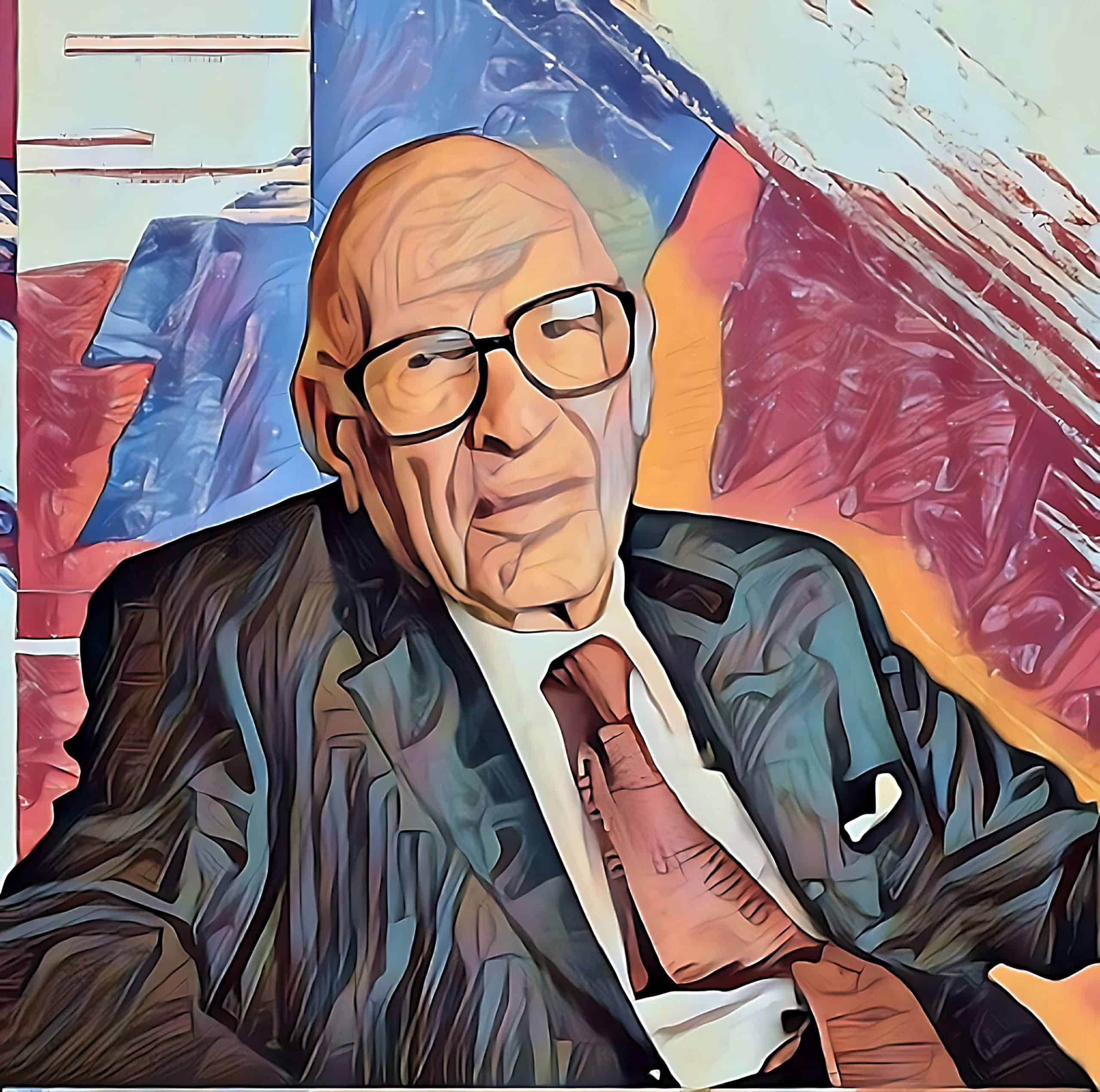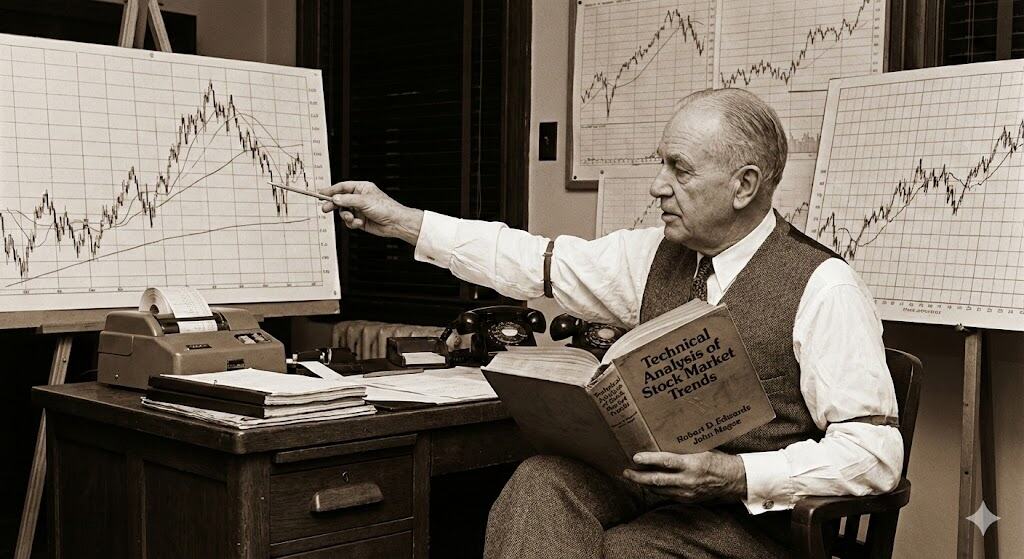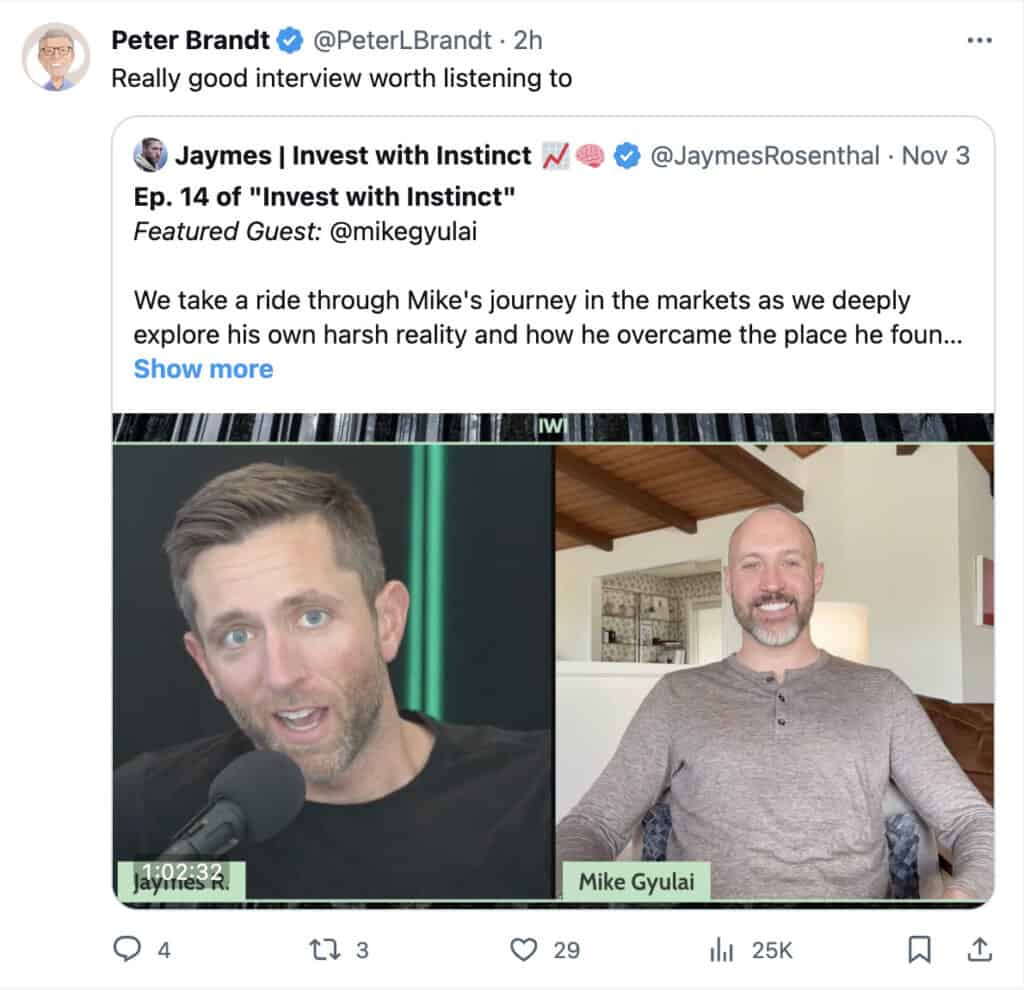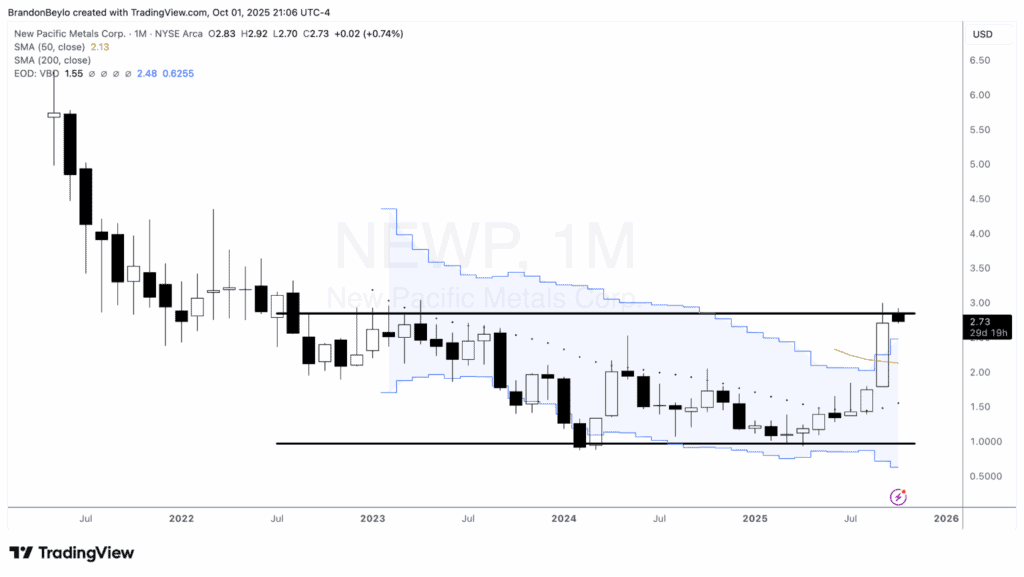He knows how to identify securities that sell at considerably less than their value to a private owner; And that’s all he does … He owns many more stocks than I do and is far less interested in the underlying nature of the business; I don’t seem to have very much influence on [him]. That is one of his strengths; No one has much influence on him.
Those words, spoken by Warren Buffett, describe one of the greatest value investors of all time. No, Buffett isn’t referring to his longtime business partner Charlie Munger nor his famed teacher Benjamin Graham.
The investor is Walter Schloss.
Walter Schloss’ Value Investing
Schloss is a wellspring of value investing wisdom.
Over the course of this piece we’ll dive into Schloss’ principles for investing. His ideas on portfolio construction. And we’ll finish with applying these lessons learned to analyzing shipping stocks. An industry we’re particularly bullish on at the moment.
Battlefields to Balance Sheets
Schloss enlisted in the US Army Signal Corps at the end of 1945 after his stint as a runner on Wall Street. Before being shipped overseas, Benjamin Graham offered Walter the opportunity to join his firm, Graham-Newman Corporation, as a security analyst. Schloss accepted the offer after returning from service and quickly learned the ropes of value investing through real-world applications of Ben Graham’s classroom teachings.
After working under Graham for nine years, Schloss opened up a one man shop, Walter J. Schloss Associates.
As the saying goes, the rest was history.
Schloss took his original partnership money and spent the next 32 years compounding capital at 16.4% annually compared to the S&P return of 9.8%.
Schloss accomplished this impressive feat while operating out of a small room (Warren Buffett referred to it as, “a portion of a closet”) at Tweedy, Browne’s offices. He didn’t use a computer or a team of analysts. Just a monthly paper subscription to Value Line. He was the embodiment of a spartan approach to investing.
How was Schloss able to compound capital at such high rates over such a long period of time? What was his secret sauce?
Schloss kept a low profile (similar to the Chandler Brothers) and routinely shied away from press coverage or interviews with journalists for the majority of his career. However, as he got older, he started sharing his wisdom in the form of articles and speaking events. Through these sporadic public appearances we can get a better picture of just who this man is and how he invested in markets.
Walter Schloss’ Investment Philosophy
Buy Stocks Like Groceries, Not Perfume
Like other successful investors, Schloss followed a simple yet robust approach to amass his fortunes. This approach can be surmised in the following bullets:
- Start with beaten-down losers, the 52-week lows and companies with temporary issues.
- Don’t lose money.
- Avoid debt like the plague.
- Try to buy stocks that manufactured products while sporting long histories of operations (20+ years).
- Focus on assets rather than earnings, citing the claim that earnings aren’t as predictable as assets on the balance sheet.
- Avoid talking to management.
- Read the entire annual report and familiarize himself with the basics of each business he bought.
- Purchase hundreds of stocks, keeping a well diversified portfolio.
- Exhibit around 25% turnover — i.e., holding period of four years.
Above all else, Schloss didn’t want to lose money. He had a tremendous respect for his limited partners’ trust in his ability to manage their capital, and did everything in his power to limit his losses. Schloss had a tremendous grasp on the psychology of the average investor and frequently used it to his advantage. During an interview with Barron’s in 1955, Schloss said (emphasis mine),
“They [stocks] tended to be ignored by the public because they didn’t have any sex appeal, there wasn’t any growth — there was always trouble with them. You were buying trouble when you bought these companies … Basically, it’s a contrarian philosophy, and people really like buying things that are doing well.”
I wish Walter Schloss was more complicated — it would help me get more pages out of the piece — but that’s really all there was to it.
He would fish in the ponds that looked like radioactive cest-pools, hold on to the ones that were the cheapest and sell when he had at least a 50% gain.
Schloss was so focused on not losing money, he often left a lot of meat on the bone — something he was perfectly fine with. In that same Barron’s article Schloss examined that,
“One of the tricks of this business is to keep your losses down and then, if you have a few good breaks, the compounding works well for you.”
These simple principles guided Walter Schloss’ stellar 16.4% net annualized return.
Along with the above fundamental tenants, Schloss offered investors 16 rules, which he called Factors Needed to Make Money in the Stock Market. As with most rules/checklists, it’s not the points themselves that matter, but the individual’s ability to stick to the rules. The rules are attached at the end of this piece. I encourage you to print it out and keep it by your desk, laptop or wherever you do your investment work.
If you would like free access to my value investing checklist click here!
Qualitative Aspects Don’t Matter
Walter Schloss didn’t care about the qualitative aspects of the business when he invested — something attributed to his inability to judge management’s acumen — and focused only on the numbers. This flies in the face of many value investors’ creeds that claim management and incentives matter amongst other areas like marketing and customer acquisition cost. There was a reason why Schloss preferred to invest this way: it helped him sleep at night.
Unlike Buffett, Walter Schloss made a point of not talking to management or factoring them in at all. His reason was that good management would eventually show up in a higher stock price and a higher multiple
This makes sense if you’re buying the assets of a business rather than their earnings and future growth prospects. You don’t need to know how management will grow earnings and reinvest their capital if you’re investing because its asset value per share is higher than what you’re paying on the open market.
Applying Walter Schloss’ Methodology to Shipping Stocks
Equipped with this knowledge of Schloss’ methods and criteria for investing in public companies, we can construct a framework to help us analyze shipping stocks.
Shippers represent a perfect harmony for the type of companies Schloss would be interested in buying: cyclical lows, asset heavy businesses trading at steep discounts to liquidation values. Let’s go through a few of Schloss’ 16 Rules and see how we can apply those directly to the messy, “road-kill” industry of shipping.
Walter Schloss’ Investing Rules and Principles
Rule 1: Price is the most important factor to use in relation to value
Shipping stocks are stupid cheap with prices for a majority of these companies trodding around all-time-lows. No matter how you look at shipping companies its undeniable that on a purely quantitative measure, they’re selling for pennies on the dollar.
That’s not to say that qualitatively there are issues — i.e., bad management, low growth prospects — but on price alone, Schloss would be interested.
Rule 4: Have patience. Stocks don’t go up immediately.
I was asked via email from one of the MO members about the difference between being early vs. being wrong — and how can I tell the difference.
Schloss is frequently quoted for buying stocks “on a scale”; as share prices fell he would buy more. This is where patience comes in. Schloss reminds us that stocks don’t go up right after you buy them — especially if you’re buying the troubled, “ick” factor stocks that Schloss made his fortune on.
Having the patience to endure a short-term selloff in share prices cannot be understated. Schloss would not have generated the returns he did if he sold quickly after share prices went against him (remember his 25% turnover rate!).
Rule 6: “Don’t be afraid to be a loner but be sure that you are correct in your judgement.”
“You can’t be 100% certain but try to look for weaknesses in your thinking. Buy on a scale and sell on a scale up.”
When investing in Schloss-type stocks, you will by default be a loner. You can’t have one without the other. Shipping stocks are at all time lows because the industry isn’t experiencing that inflow of serious capital … yet.
We know the thesis for why the shipping industry will probably heat up over the next two years, but Schloss tells us that knowing our judgement isn’t enough. Schloss encourages us to look for weaknesses.
Applying Walter Schloss’ Investing Strategy
Try Googling the bearish thesis for the shipping industry and compare it its bullish cousin you’ve subscribed to. This is called Red Teaming your thesis.
Is there anything you missed in your initial assessment? Can you identify major weak points in your thesis? Are there any biases possibly clouding your judgement etc…
Buying on a scale allows us to account for our inability to time when the market will become less irrational. Schloss wouldn’t take his full position all at once because he knew the stocks he bought were in trouble, and they were likely to fall further.
Selling on a scale works for the inverse reason as buying on a scale — the stock could keep going up as you unload your position, giving you incrementally higher profits as opposed to dumping the entire position at once.
Rule 10: “When buying a stock, I find it helpful to buy near the low of the past few years.”
“A stock may go as high as 125 and then decline to 60 and you think its attractive. 3 years before, the stock sold at 20 which shows that there is some vulnerability in it.”
Following the vein of Rule 1, Rule 10 provides the investor with an increased margin of safety when making their initial investment. According to Schloss, If buying a stock at its 52-week low is good, buying a stock at its all-time low is even better.
The good news for investors is that the majority of companies in the shipping industry are trading at all time lows.
Once again, these stocks have problems (whether industry specific, company specific or a combination) they’re currently dealing with. Buying these companies at all-time lows helps us sleep at night.
Rule 11: “Try to buy assets at a discount rather than earnings.”
“Earnings can change dramatically in a short time. Usually, assets change slowly. One has to know how much more about a company if one buys earnings.”
Walter Schloss focused only on the balance sheet and the assets that could be liquidated for cash. Applying this to the shipping industry gives us an easier framework for analysis. We don’t have to understand management and the intricacies of the businesses if the company is selling at below half its net asset value measured by the active secondary scrap market.
Putting Words Into Action: Next Steps
How do Schloss’ principles coupled with the value opportunity in the shipping industry play out in real time? What are actionable steps to take if you want to invest in these shippers?
The plan itself is simple in theory — but like Schloss’ rules — hard to follow:
1) Find a basket of the cheapest shipping stocks with the greatest margin of safety / discount to fair value
2) Allocate a specific amount of your portfolio to this basket of stocks and
3) Forget about them for 1-3 years.
Conclusion
Walter Schloss stuck to his rules and stayed in his well-defined lane. And by doing so, he generated “super-investor” level returns.
I’m not saying you need to do a full 180 on your current strategy in order to generate Schloss-like returns, but I am advocating for an appreciation of Schloss’ tactics — and consider adding a few tools to your investment toolkit.
(** all information for this report was sourced via www.walterschloss.com **)
Walter Schloss 16 Rules
- PRICE IS THE MOST IMPORTANT FACTOR TO USE IN RELATION TO VALUE
- TRY TO ESTABLISH THE VALUE OF THE COMPANY. REMEMBER THAT A SHARE OF STOCK REPRESENTS A PART OF A BUSINESS AND IS NOT JUST A PIECE OF PAPER.
- USE BOOK VALUE AS A STARTING POINT TO TRY AND ESTABLISH THE VALUE OF THE ENTERPRISE. BE SURE THAT DEBT DOES NOT EQUAL 100% OF THE EQUITY. (CAPITAL AND SURPLUS FOR THE COMMON STOCK).
- HAVE PATIENCE. STOCKS DON’T GO UP IMMEDIATELY.
- DON’T BUY ON TIPS OR FOR A QUICK MOVE. LET THE PROFESSIONALS DO THAT, IF THEY CAN. DON’T SELL ON BAD NEWS.
- DON’T BE AFRAID TO BE A LONER BUT BE SURE THAT YOU ARE CORRECT IN YOUR JUDGMENT. YOU CAN’T BE 100% CERTAIN BUT TRY TO LOOK FOR THE WEAKNESSES IN YOUR THINKING. BUY ON A SCALE DOWN AND SELL ON A SCALE UP.
- HAVE THE COURAGE OF YOUR CONVICTIONS ONCE YOU HAVE MADE A DECISION.
- HAVE A PHILOSOPHY OF INVESTMENT AND TRY TO FOLLOW IT. THE ABOVE IS A WAY THAT I’VE FOUND SUCCESSFUL.
- DON’T BE IN TOO MUCH OF A HURRY TO SEE. IF THE STOCK REACHES A PRICE THAT YOU THINK IS A FAIR ONE, THEN YOU CAN SELL BUT OFTEN BECAUSE A STOCK GOES UP SAY 50%, PEOPLE SAY SELL IT AND BUTTON UP YOUR PROFIT. BEFORE SELLING TRY TO REEVALUATE THE COMPANY AGAIN AND SEE WHERE THE STOCK SELLS IN RELATION TO ITS BOOK VALUE. BE AWARE OF THE LEVEL OF THE STOCK MARKET. ARE YIELDS LOW AND P-E RATIOS HIGH. IF THE STOCK MARKET HISTORICALLY HIGH. ARE PEOPLE VERY OPTIMISTIC ETC?
- WHEN BUYING A STOCK, I FIND IT HELPFUL TO BUY NEAR THE LOW OF THE PAST FEW YEARS. A STOCK MAY GO AS HIGH AS 125 AND THEN DECLINE TO 60 AND YOU THINK IT ATTRACTIVE. 3 YEARS BEFORE THE STOCK SOLD AT 20 WHICH SHOWS THAT THERE IS SOME VULNERABILITY IN IT.
- TRY TO BUY ASSETS AT A DISCOUNT THAN TO BUY EARNINGS. EARNING CAN CHANGE DRAMATICALLY IN A SHORT TIME. USUALLY ASSETS CHANGE SLOWLY. ONE HAS TO KNOW MUCH MORE ABOUT A COMPANY IF ONE BUYS EARNINGS.
- LISTEN TO SUGGESTIONS FROM PEOPLE YOU RESPECT. THIS DOESN’T MEAN YOU HAVE TO ACCEPT THEM. REMEMBER IT’S YOUR MONEY AND GENERALLY IT IS HARDER TO KEEP MONEY THAN TO MAKE IT. ONCE YOU LOSE A LOT OF MONEY, IT IS HARD TO MAKE IT BACK.
- TRY NOT TO LET YOUR EMOTIONS AFFECT YOUR JUDGMENT. FEAR AND GREED ARE PROBABLY THE WORST EMOTIONS TO HAVE IN CONNECTION WITH PURCHASE AND SALE OF STOCKS.
- REMEMBER THE WORK COMPOUNDING. FOR EXAMPLE, IF YOU CAN MAKE 12% A YEAR AND REINVEST THE MONEY BACK, YOU WILL DOUBLE YOUR MONEY IN 6 YRS, TAXES EXCLUDED. REMEMBER THE RULE OF 72. YOUR RATE OF RETURN INTO 72 WILL TELL YOU THE NUMBER OF YEARS TO DOUBLE YOUR MONEY.
- PREFER STOCK OVER BONDS. BONDS WILL LIMIT YOUR GAINS AND INFLATION WILL REDUCE YOUR PURCHASING POWER.
- BE CAREFUL OF LEVERAGE. IT CAN GO AGAINST YOU.
If you want access to my personal value investing checklist click here to secure your free copy!









